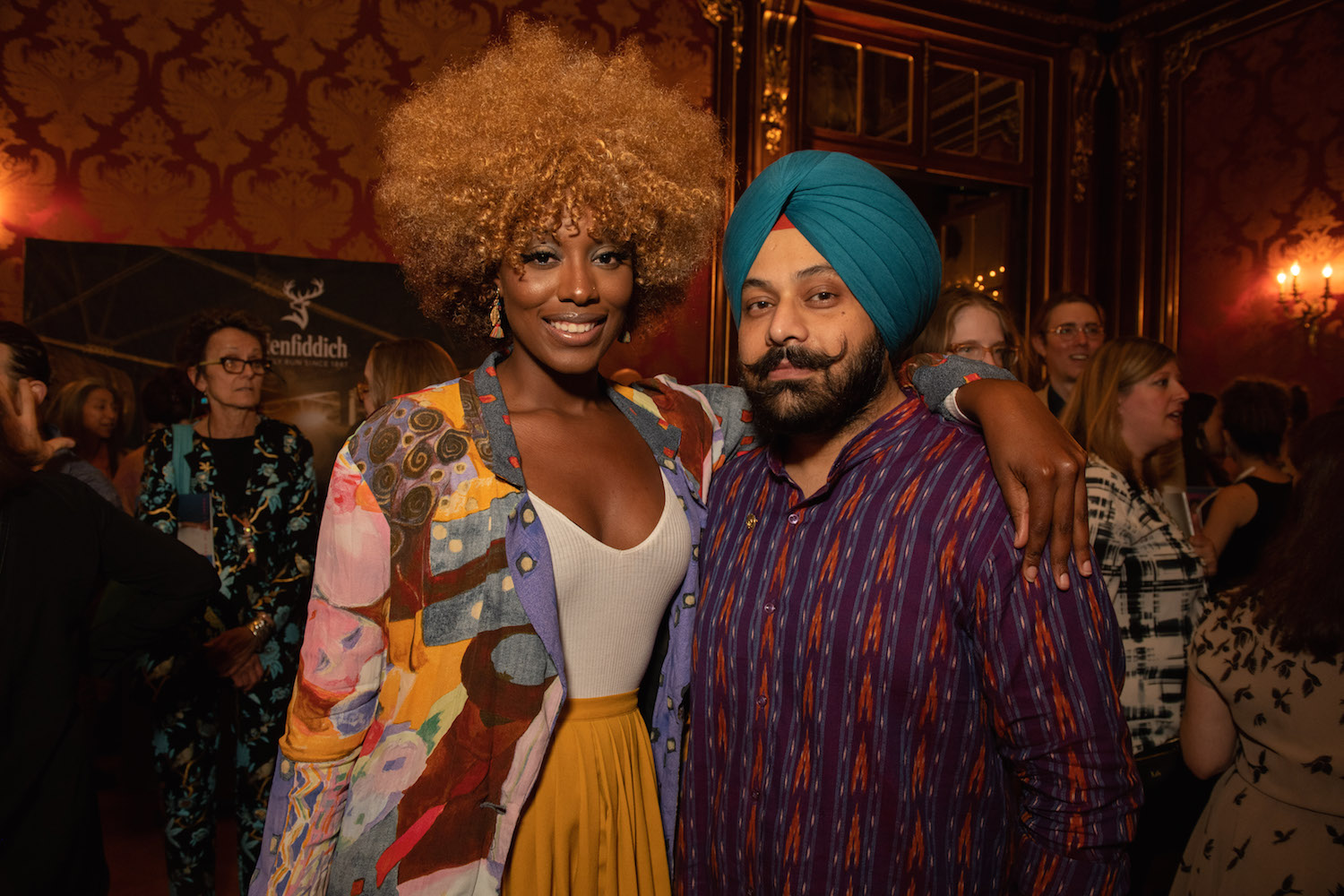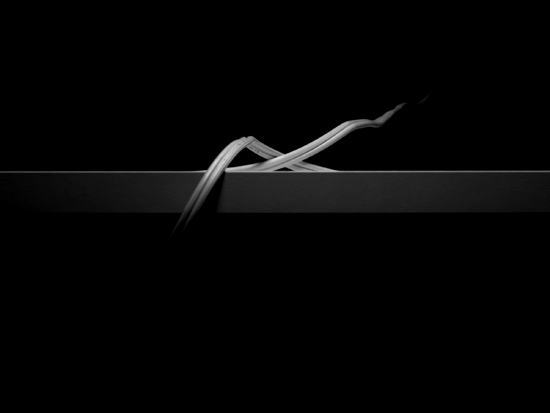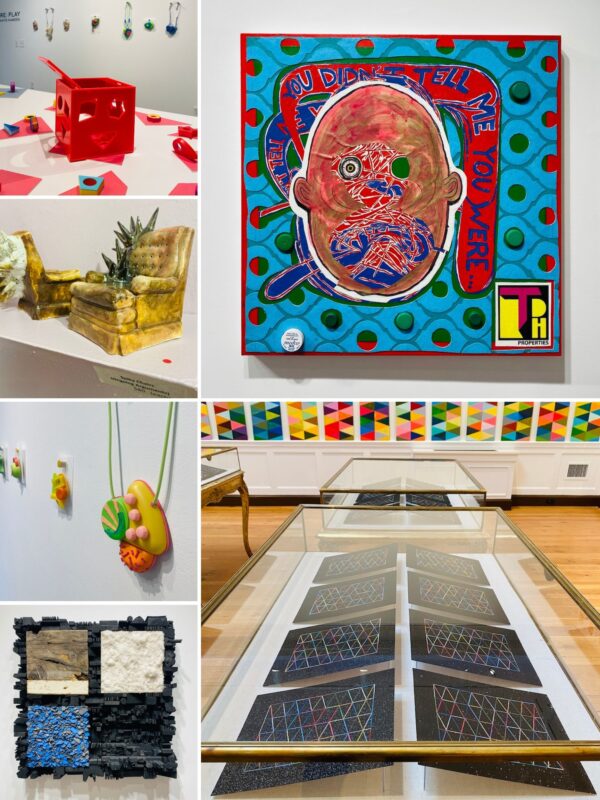The Sally Mann Retrospective at the National Gallery of Art by Liz Donadio
A Thousand Crossings presents a survey of Sally Mann’s prolific photographic life, displaying profound relationships with family and the dense southern landscapes in which she lives and works. Every room of the exhibition at the National Gallery of Art is devoted to a theme, and crossing each threshold reveals both an evolution in Mann’s visionary subject matter as well as her calculated yet beautifully imperfect mastery of the photographic process.
Family
Mann started photographing her three children in the 1980s, and continued documenting their youth and adolescence for almost a decade. Shot with a cumbersome 8×10 view camera, her deliberately crafted pictures still hold some of the fleeting, intimate qualities of snapshots. Sixty of the photographs were published in the book Immediate Family in 1992, bringing controversy regarding nude photographs of children and questions about parental responsibilities and privacy. Those questions feel far away now, however, as the pictures have settled into their place as some of the richest depictions of childhood ever made.
Seemingly spontaneous, most of the scenes were inspired by real life and then painstakingly recreated and rehearsed, with Mann’s subjects as willing and imaginative participants. Photography is complex in this way—uncovering how a moment can be simultaneously real and not real. A young girl stands out in a field with her arms outstretched, and it does not matter if the picture was captured in the moment or later.
 Sally Mann, “Easter Dress,” 1986, gelatin silver print, Patricia and David Schulte. Image © Sally Mann
Sally Mann, “Easter Dress,” 1986, gelatin silver print, Patricia and David Schulte. Image © Sally Mann
Some of the large gelatin silver prints on display have never been published or exhibited, adding to a mythical family narrative long after their subjects have grown up. Practically glowing, the B&W prints quietly resonate with warm, heavy shadows and creamy highlights. Seeing the much-reproduced photographs in person is transformational, encouraging the viewer to look deeply and intently.
Surprisingly, five color pictures stand out in this sea of grayscale. The square prints contain the same subject matter of children at play, but are completely different. As bright and vivid as the color prints are, they are somehow less powerful, less metaphorical, too real. Here, a bloody nose shows pain and awareness, a jolt out of the dreamy black-and-white allegories filling the rest of the room.
 Sally Mann, “Bloody Nose,” 1991, silver dye bleach print, Private collection. Image © Sally Mann
Sally Mann, “Bloody Nose,” 1991, silver dye bleach print, Private collection. Image © Sally Mann
The Land
At the end of Immediate Family, Mann begins to focus her camera’s attention less on her children and more on their surrounding environments. Figures in the compositions become smaller and move farther away from the lens. Soon, the landscape itself overtakes the photograph. For this series, Mann travelled through her home state of Virginia, as well as through Georgia, Louisiana, and Mississippi, capturing swamps, riverbeds, rolling hills, and battle-scarred trees.
 Sally Mann, “Deep South, Untitled (Three Drips)”, 1998, gelatin silver print, printed 1999, National Gallery of Art, Washington, Gift of the Collectors Committee and The Sarah and William L Walton Fund. Image © Sally Mann
Sally Mann, “Deep South, Untitled (Three Drips)”, 1998, gelatin silver print, printed 1999, National Gallery of Art, Washington, Gift of the Collectors Committee and The Sarah and William L Walton Fund. Image © Sally Mann
Inspired by 19th-century landscape photography, Mann used old cameras and mismatched vintage lenses to purposefully create a “less than perfect negative” using the wet-plate collodion process. The large prints (30×38 and 40×50″) hold little of the darkroom refinement of Immediate Family but contain their own ideal within flawed surfaces. Scratches, streaks, and peeling emulsion add a layer of meaning, referencing the damaged and imperfect history of the American South.
A motif of death and loss appears throughout A Thousand Crossings. For part of The Land, Mann focused on tracking and photographing the sites of Emmett Till’s abduction and murder. Till was brutally killed at the age of 14 in a 1955 racist attack. Mann named her son after Till, and tragically Emmett Mann passed away in 2016. This fact floats throughout the exhibition and cannot be ignored if the viewer is aware of it.
 Sally Mann, “Deep South, Untitled (Stick)”, 1998, gelatin silver print, Courtesy of the New Orleans Museum of Art: Collection of H. Russell Albright, M.D. Image © Sally Mann
Sally Mann, “Deep South, Untitled (Stick)”, 1998, gelatin silver print, Courtesy of the New Orleans Museum of Art: Collection of H. Russell Albright, M.D. Image © Sally Mann
Last Measure
After the lustrous surfaces of The Land, Last Measure produces inky-black matte prints mounted without glass in stark metal frames. The 38×48″ wet-plate collodion photographs are portraits of Civil War battlefields, documenting sites where thousands lost their lives.
Collodion is a flexible, sticky substance used to bind open wounds, adapted to photography in the 1850s. It holds in place a light-sensitive silver iodide on a glass plate for exposure in a camera. Collodion was used in medical treatments during the Civil War; Mann consciously joins the process to the place here, revealing her skill in weaving connections between history and image.
 Sally Mann, “Battlefields, Antietam (Starry Night)”, 2001, gelatin silver print. Alan Kirshner and Deborah Mihaloff Art Collection. Image © Sally Mann
Sally Mann, “Battlefields, Antietam (Starry Night)”, 2001, gelatin silver print. Alan Kirshner and Deborah Mihaloff Art Collection. Image © Sally Mann
Collodion negatives have to be exposed while still wet, so 19th-century photographers would carry their darkrooms with them in tents and wagons, tediously setting up and capturing scenes just before or after a battle. No action shots of the Civil War exist because it was such a slow operation.
Mann follows this approach but veers off the path by accepting and even hoping for mistakes and imperfect results. Accidents in development, light leaks, and scrapes in the emulsion all texturize the photograph’s surface. Clusters of dust become starry constellations or explosions of gunpowder across a grove of trees. Mann adds yet another layer of surface and history by coating her photographs with a varnish mixed with diatomaceous earth, the crushed and fossilized remains of marine phytoplankton.
 Sally Mann, “Battlefields, Cold Harbor (Battle)”, 2003, National Gallery of Art, Washington, Gift of the Collectors Committee and The Sarah and William L Walton Fund. Image © Sally Mann
Sally Mann, “Battlefields, Cold Harbor (Battle)”, 2003, National Gallery of Art, Washington, Gift of the Collectors Committee and The Sarah and William L Walton Fund. Image © Sally Mann
Last Measure has a substantial presence not just in size, but because the photographs act as windows into the past. They entail visions of Mann stomping through the fields with her antique lenses and antiquated process, trying to bring history back to life on her ground glass.
Abide with Me
Four photographic series are included in this section of the exhibition, the largest of the five rooms. Investigating the role of race and history in the South and Mann’s own youth, the projects twist and bind together, sharing a narrative to act as one great masterpiece.
Rivers and Swamps is a series of lustrous tintypes made between 2006-2015 in the Great Dismal Swamp of southeastern Virginia. The images showcase the challenging physical pathways that fugitive slaves needed to navigate when escaping the bonds of slavery. Mann again reveals the potential of landscape to be a wretched place, but with a great sensitivity to the quality of surface.
 Sally Mann, “Blackwater 25,” 2008-2012, tintype, Collection of the artist. Image © Sally Mann
Sally Mann, “Blackwater 25,” 2008-2012, tintype, Collection of the artist. Image © Sally Mann
For the portraits in Men, Mann selected her African-American subjects by trying to understand something outside of her own history. The substantial prints made from collodion negatives contain the essence of each person, focusing only on their hands or a blurry side view. Larger than life, they hold a strong presence, especially when juxtaposed with the swamp pictures.
Feminine archetypes are displayed on the opposite wall. “Two Virginias” offers portraits of Mann’s young daughter Virginia, and her namesake, Virginia “Gee Gee” Carter. Carter was an African-American woman who worked for over 50 years for Mann’s family. She played a vital role in her growing up, as well as providing a formative understanding of racial issues in the South. The dual portraits delicately reveal age and youth intertwined.
 Sally Mann, “The Two Virginias #4,” 1991, gelatin silver print, Collection of The Estée Lauder Companies Inc. Image © Sally Mann
Sally Mann, “The Two Virginias #4,” 1991, gelatin silver print, Collection of The Estée Lauder Companies Inc. Image © Sally Mann
At the front of this room are two large frames of snapshot pictures, showcasing Carter’s own family and presence in Mann’s life. They stand apart from her photographs, acting as an introduction to the themes explored within.
In between these loving tributes are grids of 19th-century African-American Southern churches. Some of the buildings still exist, some have been renovated, and some are completely gone. Again, Mann uses an aged analog process that matches the subject matter. Printed on expired darkroom paper, each print has different colors, tones, and exposure. The deteriorating paper enhances the quality of the unknown in these memorial depictions of spirituality and worship.
What Remains
Mann returns to her family in the fifth and final room, but instead of youthful innocence, the pictures meditate on mortality and loss. The series titled Proud Flesh documents her husband’s muscular dystrophy and gracefully depicts the deterioration of his body. Each small photograph has a title taken from poetry, literature, or mythology. The lyrical descriptions uncover both deep meaning about their relationship and the physical changes our bodies can experience.
 Sally Mann, “Semaphore,” 2003, gelatin silver print, The Museum of Fine Arts, Houston. Image © Sally Mann
Sally Mann, “Semaphore,” 2003, gelatin silver print, The Museum of Fine Arts, Houston. Image © Sally Mann
A rare instance of self-portraiture exists in What Remains. In dark, almost maroon-colored ambrotypes, Mann shows herself in a grid alongside her family pictures, instead of just imagined behind the lens. Made in 2006 after a serious riding accident, Mann depicts herself as a haunted figure, showing us something of her inner life.
Revisiting her children as subject matter, Faces consists of close-up facial portraits of her children made in 2004. Reveling in long-exposures, some as long as three minutes, they are wispy and blurred—perfectly imperfect. Hanging alone on one wall is the monumental Triptych, where each print is 48×39″. There is no mention of names here; the floating heads are like angels, specters, or spirits. Immediate Family directly isolated each child but here they blend together as one.
 Sally Mann, “Triptych,” 2004, 3 gelatin silver prints, The Sir Elton John Photography Collection. Image © Sally Mann
Sally Mann, “Triptych,” 2004, 3 gelatin silver prints, The Sir Elton John Photography Collection. Image © Sally Mann
Flanking the door leading out of the gallery are portraits of Mann’s daughters, Jessie and Virginia, one with eyes closed and the other with a hypnotizing gaze, a single eye wide open.
The exhibition could have ended there, walking through that doorway. Instead, the viewer is left with a video of Mann in her studio, demonstrating the collodion process, and then three small B&W portraits from the Men series, with a video interview of their subject. Alongside this is an illustrated map denoting the sites of Mann’s photographic travels.
This finale feels like an afterthought, spoiling the waking dream of the other rooms. Of course, it is interesting to see Mann at work, especially for those who have no knowledge of collodion photography. But the urge is to retreat, tracing Mann’s development to the beginning and leaving with impressions of landscape, memory, and history, witnessing her revelation of realizing a picture and carrying it away.
Sally Mann: A Thousand Crossings is on view at the National Gallery of Art until May 28, 2018. Featuring some 110 photographs, the exhibition is curated by Sarah Greenough, senior curator and head of the department of photographs, National Gallery of Art, and Sarah Kennel, the Byrne Family Curator of Photography, Peabody Essex Museum.
Top Image: Sally Mann, Last Light, 1990, gelatin silver print, Joseph M. Cohen Family Collection. Image © Sally Mann






